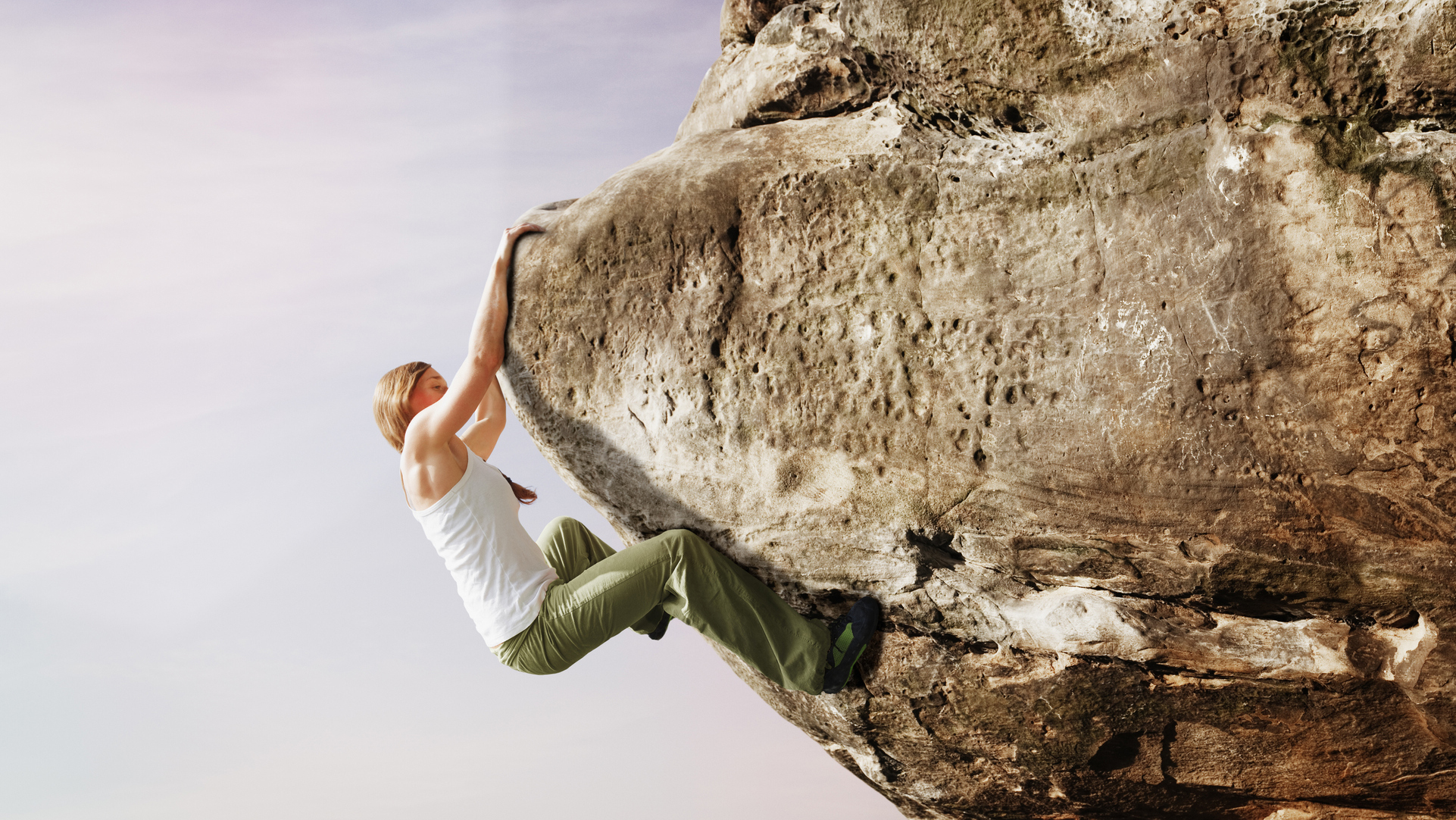
Bouldering’s popularity has exploded in recent years, particularly in our cities. Thought to be one of the fastest growing sports on the planet, it evenly recently became an Olympic event. The sight of someone gymnastically stretching towards a multicolored hold has become common on our Instagram feeds. Supply has kept pace with demand, with a surge of new urban climbing gyms offering bouldering problems with various levels of difficulty.
Of course, there’s also the thrill of outdoor bouldering, the sport’s purest form. From classic venues like Yosemite and Red Rocks in the US, and Fontainebleau and the Peak District in Europe, to lesser-known gems, there are almost endless possibilities in terms of places to go bouldering outdoors.
So, whether you’re looking to smash through the Vs at your local climbing gym or you’re keen to progress on actual boulders – or both – knowing how to train for bouldering will help you achieve your ambitions.
It’s a sport that requires explosive strength one moment and delicate balance the next. You’ll need endurance, a strong core, ironclad grip and plenty of flexibility and balance too. Knowing how to train for all of this can be tricky. We’re here with our straightforward guide and top tips to make those boulder problems less… problematic.
Meet the expert
What is bouldering?
- Bouldering is rock climbing on often difficult, low height objectives
- It's done without ropes, with protection provided by a crash mat
- Bouldering can be done both outdoors and indoors at climbing gyms
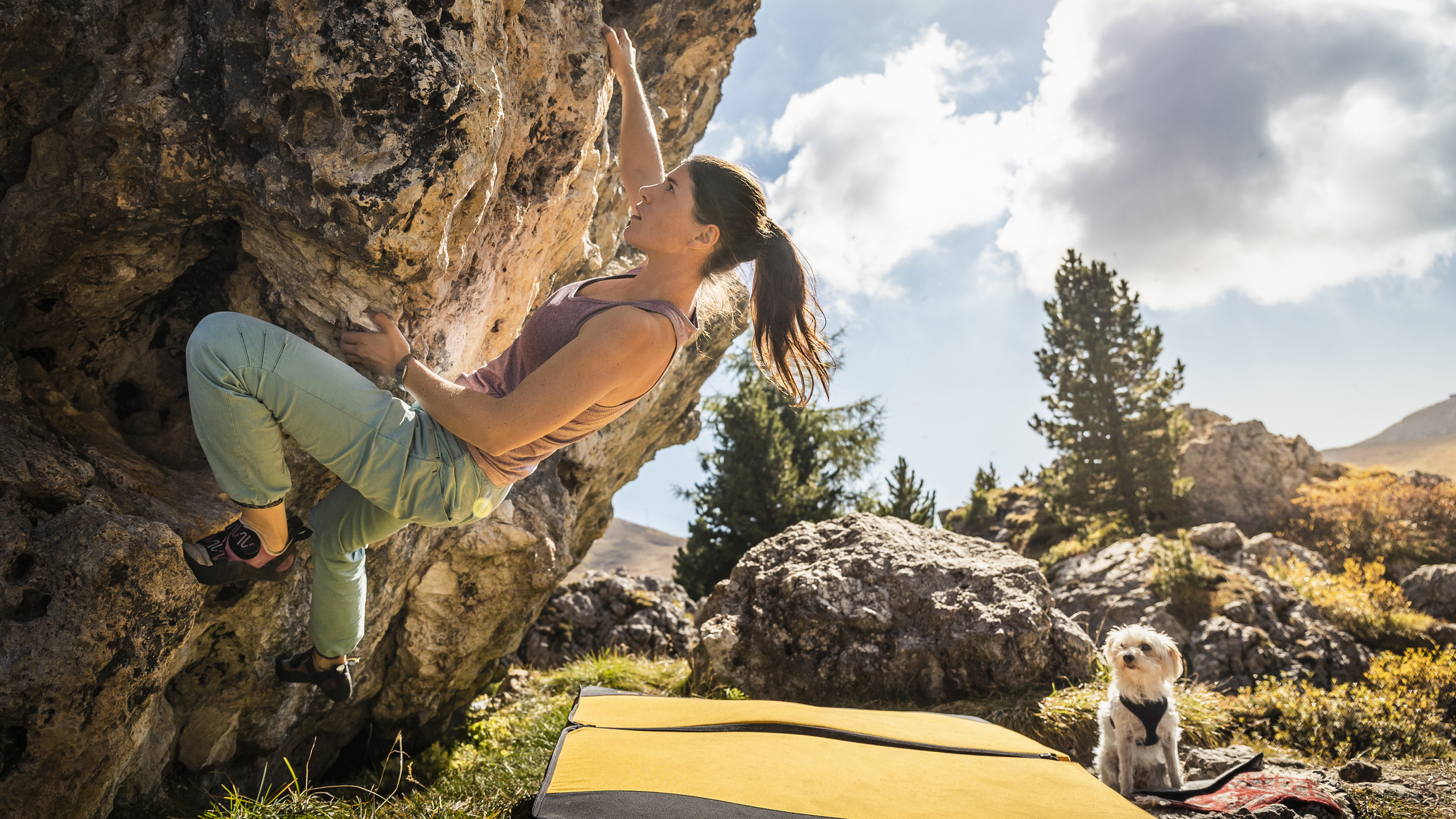
Bouldering is a form of rock climbing without ropes and harnesses that focusses on often difficult, low-height objectives, with safety provided by a crash mat. As it requires much less equipment than some forms of climbing, coupled with the low height of the objectives, bouldering is very accessible. Don’t confuse accessibility with a lack of challenge though, the difficulties posed by boulder problems can often be much more technical than those found on a sport or trad climb.
In its purest form, bouldering takes place on… you guessed it: a boulder. However, bouldering is the type of climbing that lends itself best to artificial indoor climbing centers, as there’s no need for rope skills and equipment. So, you can’t go mountaineering in New York, you can’t go trad climbing in London and you can’t go ice climbing in Paris. However, most big cities have indoor bouldering facilities these days.
Climb! Climb! Climb!
- The most effective way to train for bouldering is to go bouldering
- Regular bouldering workouts will strengthen the muscles required and hone your technique
- However, it's important not to overdo it, as you run the risk of injury
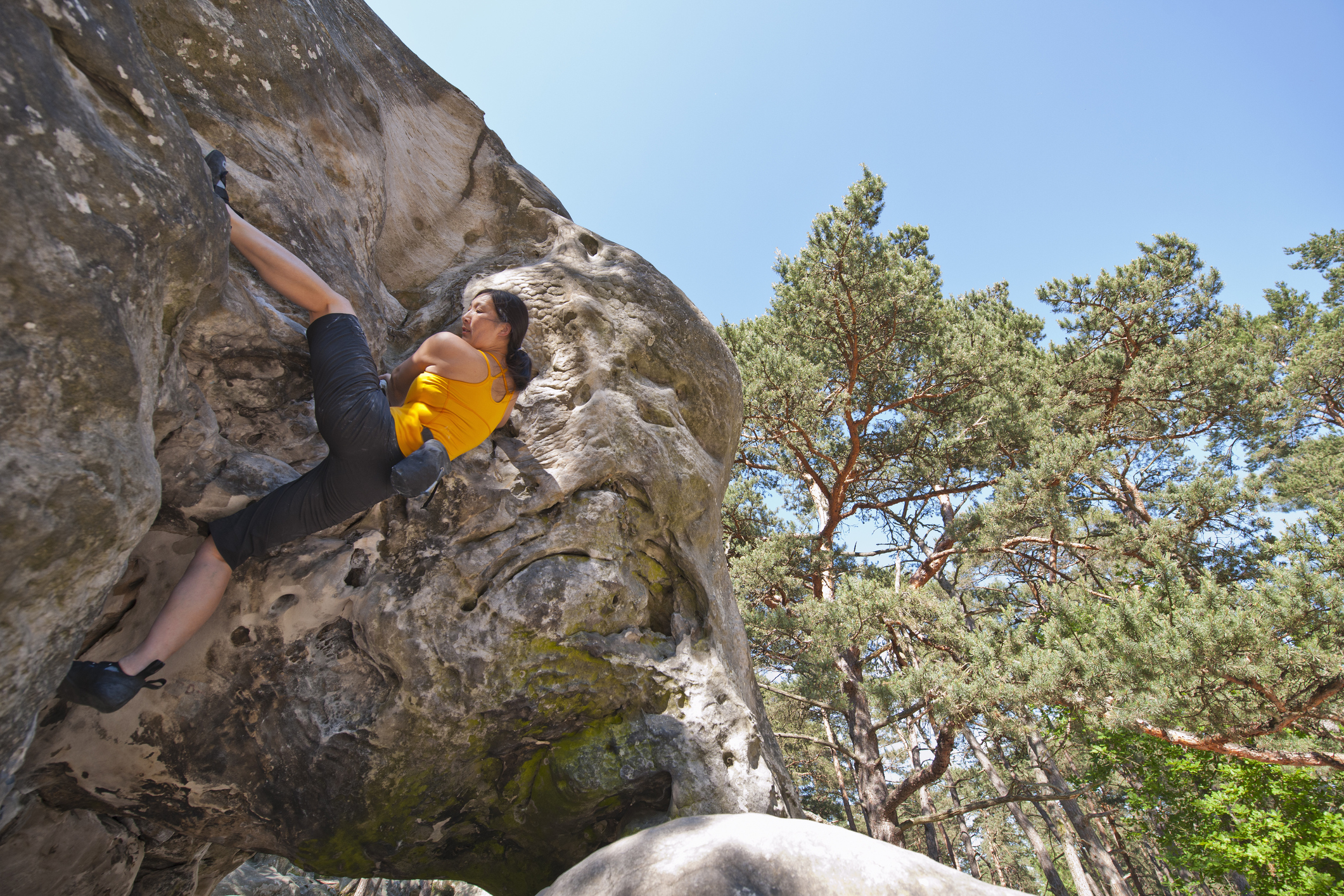
As we stated in our guide on how to train for climbing, the best way to train for any form of climbing is… to go climbing. This is known as the principle of specificity. Regular visits to your indoor wall or a nearby outdoor bouldering site will see you reap rewards, as you’ll be working and strengthening all the muscles required, while getting your mind adept at solving the problems.
However, it’s important not to overdo it as you’ll run the risk of injury. This is where conditioning, strength training and workouts to improve flexibility and balance come into play, enabling you to safely build on your bouldering foundations.
When at the wall, don’t try to jump ahead too much in terms of climbing grades either, as you could risk injury and repeated failings can have a bearing on motivation. Build up gradually, taking the time to master your technique. Speaking of which…
Study correct technique
- Study, utilize and perfect the techniques of experienced boulderers
- This means you won't be practising the wrong thing

In sport, occasionally someone will do something never seen before and leave all the spectators completely in awe. Think Dick Fosbury, the American high jumper whose technique led him to gold at the 1968 Summer Olympics and has become the standard technique used by high jumpers ever since. Or Johan Cryuff, the Dutch footballer who, during the 1974 World Cup, turned Swedish defender Jan Olsson inside out by dragging the ball behind his standing leg and rapidly switching direction with a move that has since become known as the Cryuff turn.
However, for the most part, the elite athletes of the world have studied, utilized and perfected the techniques of those who’ve come before them. The same goes for effective climbing techniques, so it’s worth learning from the best and imitating them, so that you’re not practising the wrong thing. So, learn from those who are more advanced and study the elites to ensure your technique is as efficient and effective as it can be. Once you're elite yourself, you could maybe try something radical and, who knows, maybe add a new chapter to the story of bouldering.
Identify and train your weaknesses
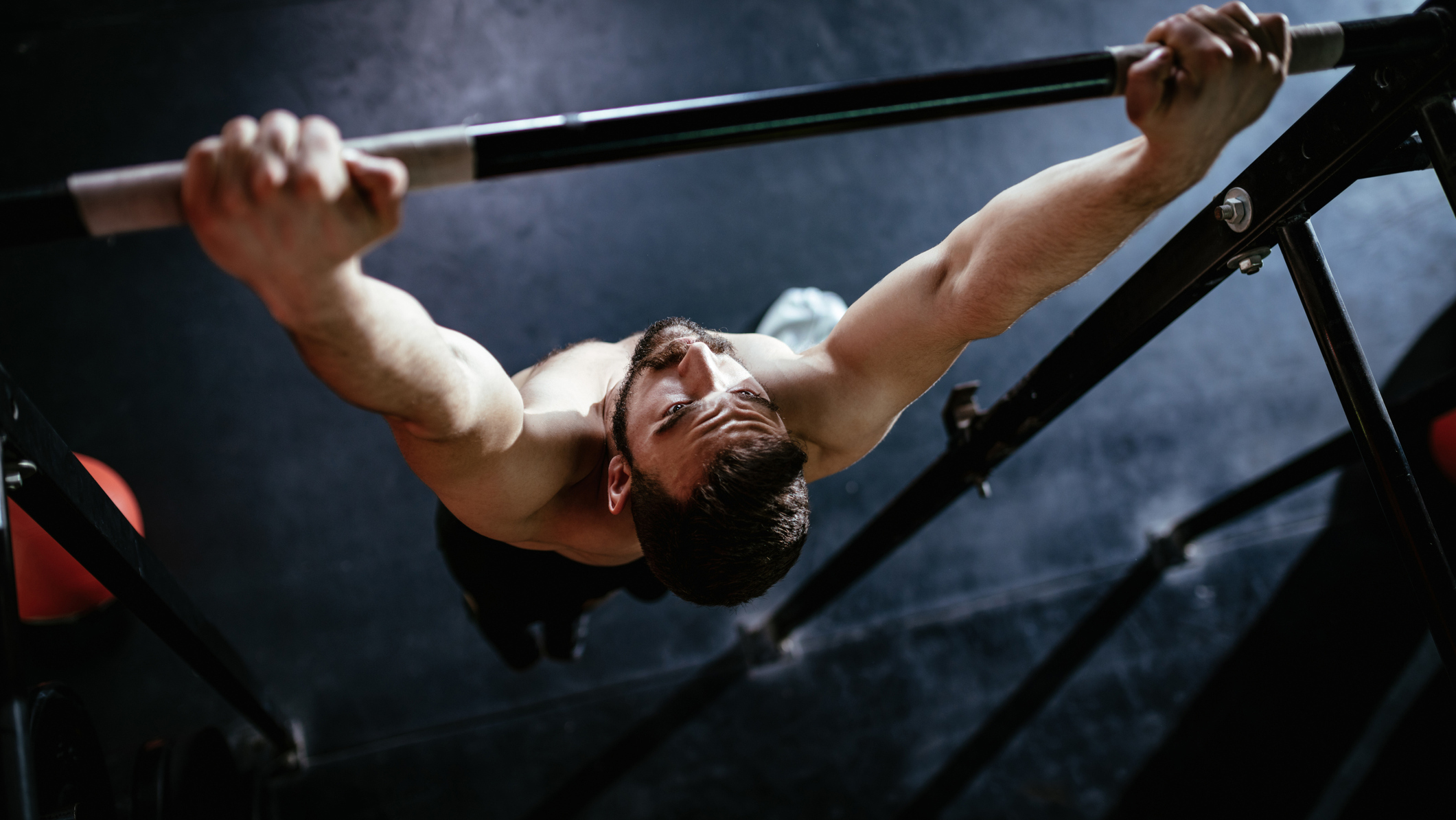
When it comes to an individual training plan, the plan should be exactly that, individualized. So, while we can recommend certain types of exercise to help you with your bouldering in general, the amount of time and energy you put into each kind will depend on which ones you need to work on. Your overall approach should be holistic, paying attention to strength, flexibility, balance and stamina, but paying particular attention to the areas you need to improve on most.
So, if your weakness is balance, exercises that help to improve your balance and core strength will be the most profitable. Whereas, if you’re having endurance issues, you’ll need to focus on cardiovascular exercises. Try to choose approaches you know you’ll enjoy, as you’ll be more likely to stick at them.
Strength training
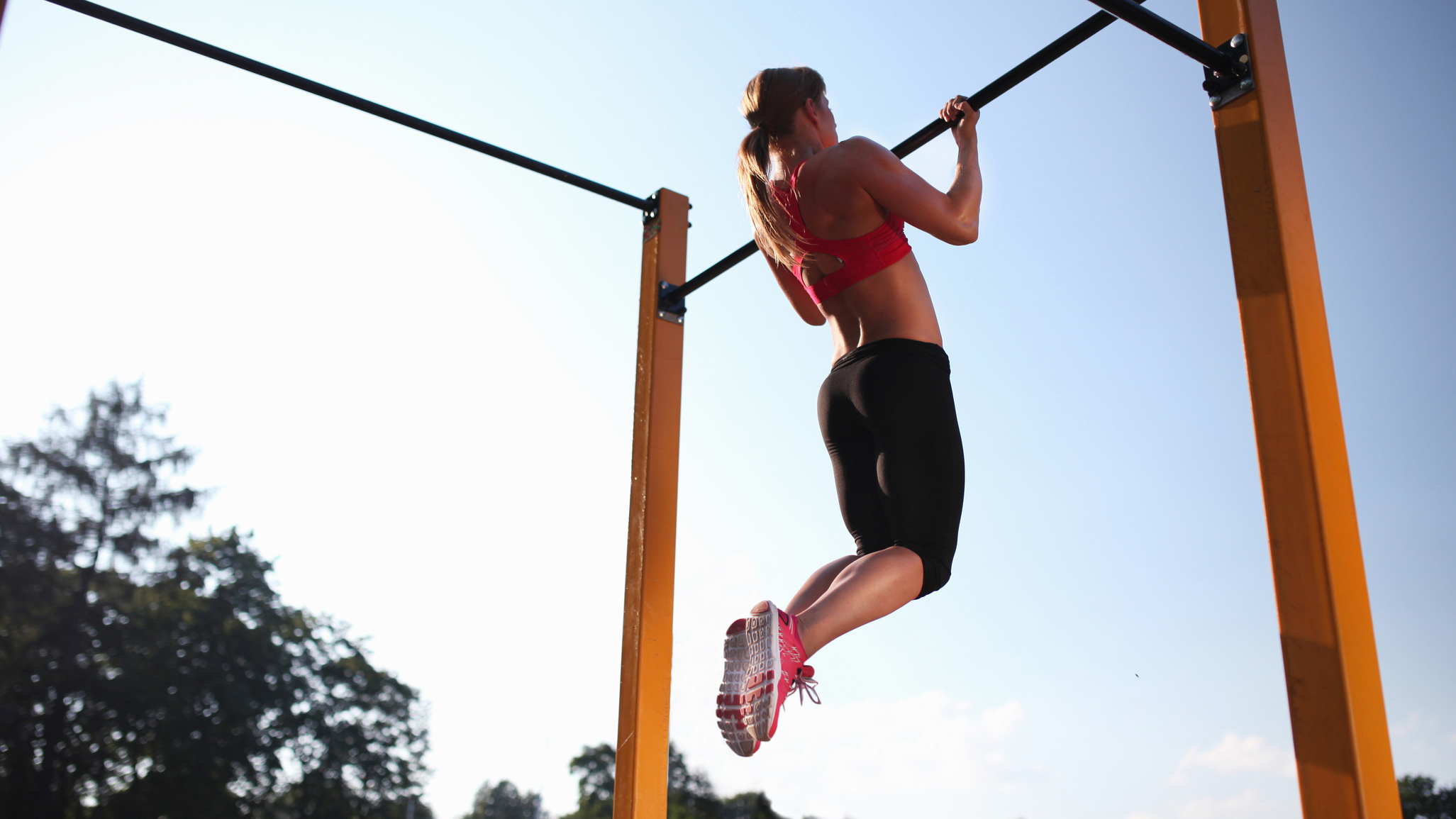
There are loads of exercises out there that are designed to improve muscle power and strengthen the core, so I won’t go into all of them here. However, it’s important to remember that bouldering is a full-body workout and that your legs are just as, if not more, important than your arms.
With this in mind, one of the very best exercises when it comes to training for bouldering is squats. Squats not only strengthen the legs, buttocks and core, they also improve balance. They require a hefty amount of body tension to maintain, which is good training for bouldering, when you’ll want to keep your body in as close to the wall as possible.
In terms of upper body strength, regular repetitions of the classic pull-up are hugely beneficial for developing our back and bicep muscles in particular. You don’t even need to head to the nearest gym to practise pull-up either – all you need is a bar that can support your own body weight.
While pull-ups are great for building strength you’ll need for dynamic action, simply hanging from the bar for an extended period is a great way to develop strength endurance. As you progress, you can increase the hang time, or reduce the number of fingers used. Which brings us to…
Fingerboard fun?
- Fingerboards should be used only once you've reached an advanced level
- They will increase finger strength and core strength, allowing for marginal gains
- Time spent on a fingerboard isn't a substitute for time spent on the wall

Finger strength is vital once you journey up through the bouldering grades. Exercises using fingerboards, resin or wooden training devices that feature myriad holds and grips, can be the answer. You’ll find them installed at the climbing gym, or there’s the option of purchasing one for use at home.
The first thing to state here is that time spent on the fingerboard is no substitute for climbing outdoors or at the wall. A fingerboard will, if used correctly, improve your finger strength and core strength but it won’t enhance your climbing technique. Only climbing will do this. The second, and most important thing, is that fingerboards aren’t well suited to beginners. They’re best for those who’ve progressed to the point where they’ve hit a bit of a ceiling in their bouldering, perhaps climbing at around V4 or V5 and the marginal gains made by being able to grip intricate holds are going to make the difference.
Yoga for bouldering
- Yoga enhances flexibility, balance and relieves the muscles used on the wall
- It trains you control your breathing during exercise, which is also important when bouldering
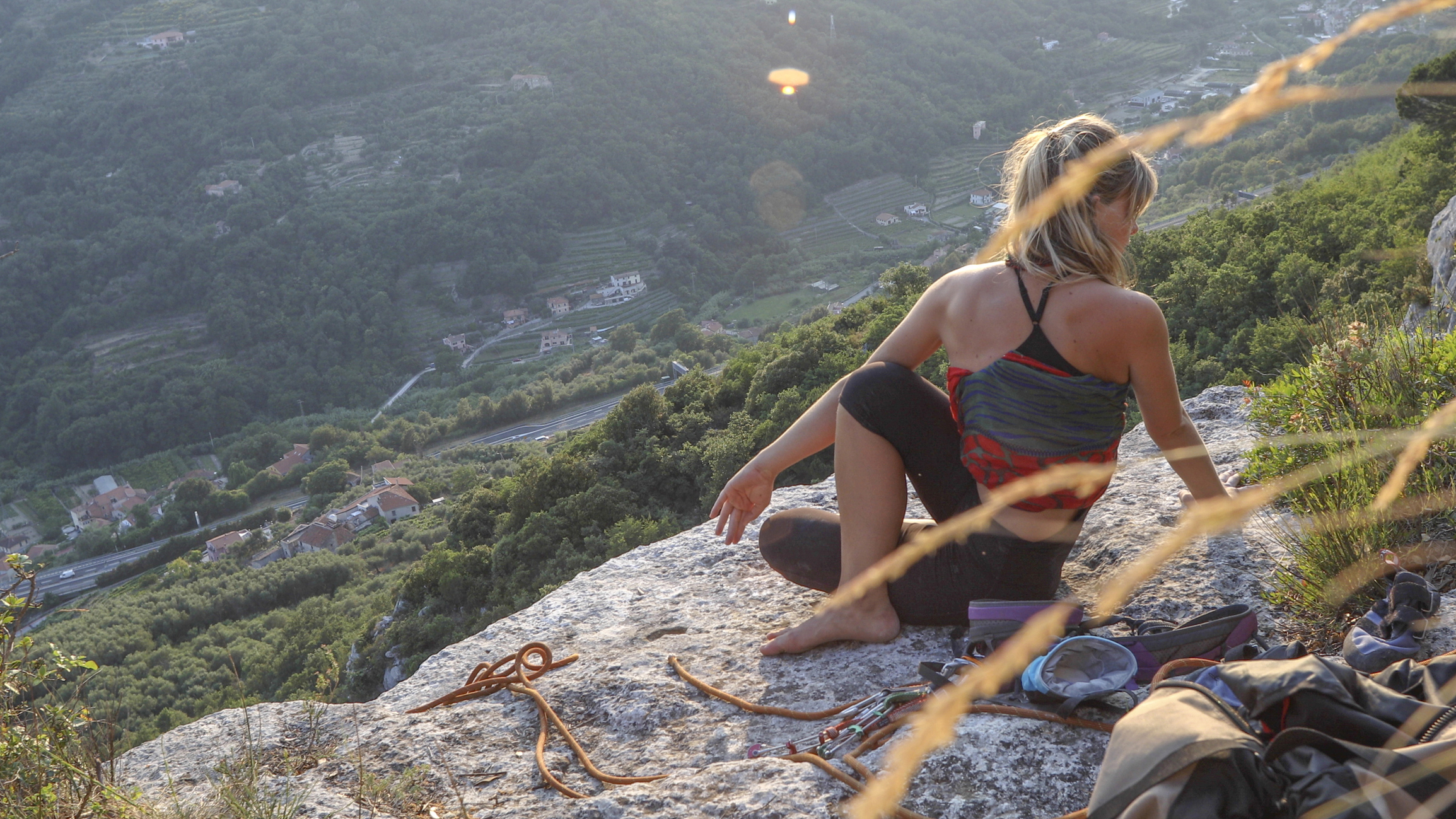
Flexibility and balance are just as important as strength when it comes to the more demanding boulder problems. Exercises that improve these are therefore important. Yoga is a very good shout, as it not only enhances your flexibility and balance, but it also relieves the muscles you use most on the wall.
Many rock climbers extoll the virtues of yoga and practise it on their rest days. If you were to go bouldering every day, you’d end up with some pretty achy limbs and sore hands. Yoga is a much gentler exercise that still develops the body in key areas. As well as the flexibility and balance benefits, the ability to control your breathing is very much the cornerstone of yoga, while also being a highly beneficial skill when bouldering.
The importance of cardio

- Bouldering can be the most physically intense form of climbing
- Make sure you do plenty of aerobic exercise to improve stamina
Due to the challenging nature of the problems, bouldering can be the most physically intense form of climbing, particularly if you’re looking to smash out loads of climbs in a day. While the exertion may not be as necessarily continuous as on a multi-pitch trad climb, boulderers don’t have the excuse of belaying to stop.
The point here is that cardio workouts are up there with strength, balance and flexibility workouts when training for bouldering. Running, hiking, swimming, skipping, cycling, aerobic dancing – the choice is yours, but try to get out a few times a week for decent cardio workouts in order to improve your stamina, muscle tone and general cardiovascular health.







